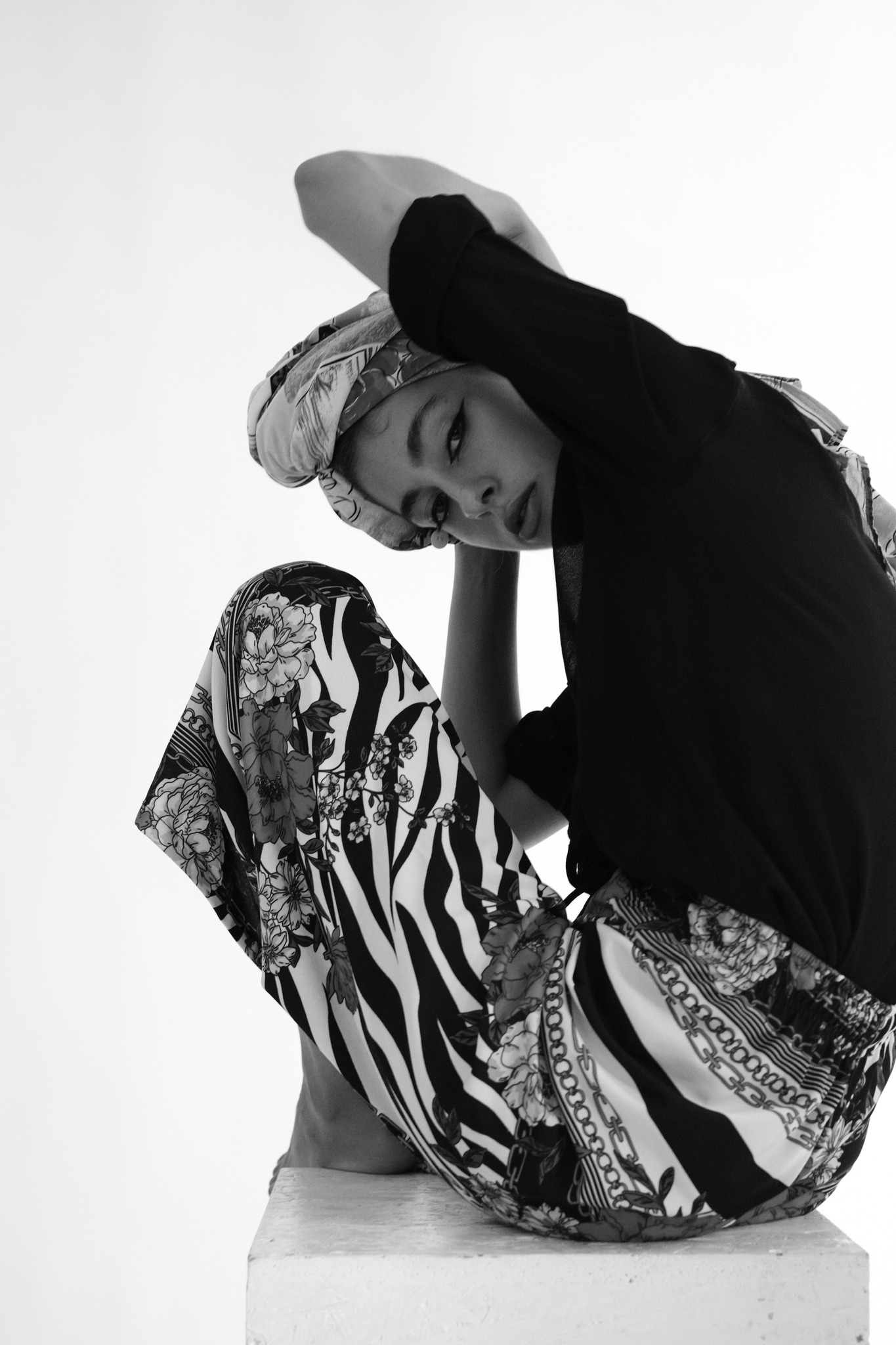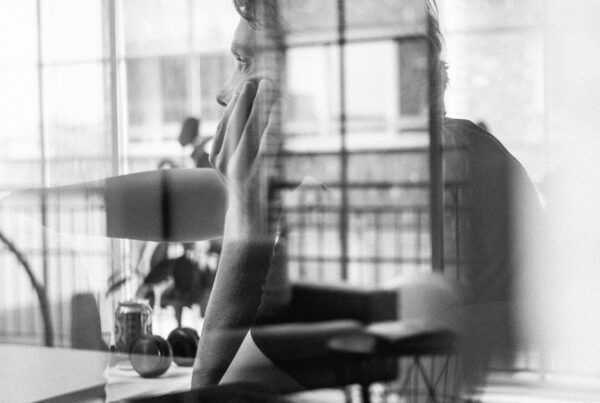
Mirror mirror on the wall, what should I wear to impress them all? Clothes are often hypothesised to be a form of communication and self-expression, but is there really that much meaning to a simple piece of fabric? This article argues that a person’s sense of fashion can indeed reflect an individual’s attitudes as well as their social environment.
Mirror mirror on the wall, what should I wear to impress them all? Clothes are often hypothesised to be a form of communication and self-expression, but is there really that much meaning to a simple piece of fabric? This article argues that a person’s sense of fashion can indeed reflect an individual’s attitudes as well as their social environment.

Photo by Pika Ivana Kostanjsek
Model: Zala Neža Zajc

Photo by Pika Ivana Kostanjs
Model: Zala Neža Zajc
“You are what you wear PERIODT!! I know some may have a hard time excepting this as gospel, but this is a fact!!!”, it says in a fashion blog-post, titled ‘In What Ways Does Clothes Reflect Your Personality?’ (Edmonson, 2020). The questionable use of English and exclamation marks aside – many of us would probably share the belief that our choice of clothes are closely tied to our personalities. After all, humans are highly visual creatures with a natural talent for creating first impressions based on appearance (Smith, Mackie, & Claypool, 2015). This natural talent relies on the assumption that we can extract important information about a person from their clothes. Are they approachable? Threatening? Where are they heading in life? In my first week of university, I was amused at how often I heard comments like “You can tell which faculty people belong to by the way they dress”. It is surely fun to hypothesise about style and personality, but as psychology students, we should take it a step further and check if our hypotheses are backed up by research – that is, if people are truly as revealing with their clothes as we assume them to be.
“I was amused at how often I heard comments like 'You can tell which faculty people belong to by the way they dress'”
The most obvious link appears to be the one between an individual’s style and their attitudes. Research found that clothes can reflect how you feel about yourself: In a study examining males’ body satisfaction and clothing choices, there was a clear link between body satisfaction and clothes with a tight fit, as opposed to body dissatisfaction and looser clothes (Kim et al., 2018). Another study investigating women’s clothing choices showed that women who are more achievement-oriented are more likely to dress in professional attire as opposed to casual or sexy clothes (Ericksen & Sirgy, 1989). Clothes can also reveal how we feel about ourselves in relation to others: Fashion is generally considered to be a means of communication (Holman, 1980) and can be strategically used to convey a certain image. In other words, fashion is utilised for impression management, which describes our efforts to leave others with our desired first impression (Smith, Mackie, & Claypool, 2015). For example, people can communicate sociability through wearing in-fashion clothes (Johnson et al., 1977). At other times, people might want to communicate specific messages like “I am a professional” (Thurston et al., 1990), “I am feminine”, or “I am sexy” (Holman, 1980). An interesting overlap in these studies is that women who dress “in-fashion” and “in a classic or contemporary style” were seen as more sociable and professional (Johnson et al., 1977; Thurston et al., 1990). Since women who dress “out-of-fashion” receive less favourable judgments (Gurung et al., 2018), it seems that adherence to fashion-standards is crucial to professional success. The phrase “dress for success” seems applicable, but does this finding translate into other contexts? A study examining self-perception of perpetrators suggests so: In assessing the re-socialisation efforts of ex-prisoners, it was found that adopting a new clothing style empowered ex-prisoners in their strive for social integration. A new clothing style helped them distance themselves from their criminal past and re-bond with their social network (Smiley & Middlemass, 2016).
Speaking of ‘rebonding’, fashion can supposedly reflect the desire for social integration that goes beyond the immediate social circle and all the way to finding your place in society. Bear with me, we are getting nostalgic: Y2K-fashion (from the early 2000s) had a recent return and is supposedly the expression of a desire to return to the “simpler, sillier times” (Allaire, 2021). Interestingly enough, boot-cut and low-rise jeans, bold belts, scarf-tops and trucker hats are particularly popular amongst members of the so-called Generation Z, which were barely old enough to comprehend the term “fashion” when the 2000s-trends emerged (Allaire, 2021). Social scientists interpret vintage fashion as nostalgia about an imagined past: It is a cry for comfort and stability. As Veenstra and Kuipers (2013) put it, nostalgia is the contemporary reaction to a feeling of dislocation and alienation in our fast-changing societies. This means that retro fashion is supposedly an expression of discomfort that is evoked by the social issues following modernisation, industrialisation and urbanisation.
“Social scientists interpret vintage fashion as nostalgia about an imagined past: It is a cry for comfort and stability.”
Digging deeper into this topic, we see that clothing as a societal statement is not restricted to Y2K-fashion. For example, part of the queer community endorses the ‘gay dresscode’ as a way to signal sexuality as well as solidarity to those “in-the-know” (Schofield & Schmidt, 2005). At the same time, the gay dresscode would not exist if people on the queer spectrum felt they could openly express their sexuality. It follows that subculture fashion reflects society, as it is often an expression of opposition to mainstream societal standards. Other examples include punk and Lolita fashion. The term “punk” elicits vivid imagery of teenagers with mohawks, piercings and safety-pins all over their black denim jackets. Underneath this fashion statement lies criticism towards the ‘authoritarian’ political landscape that punks saw in the late 70s/early 80s society (Clark & Bryant, 2019). Although it appears to be the perfect opposite, Lolita-fashion is said to be based on the same notion of ‘escaping conformist society’ and a DIY-mentality. More specifically, the lace-y dresses, pastel-coloured bows and sparkly accessories are chosen to avert the male gaze, therefore being a female statement against traditional women’s roles in Japan’s “male-dominated society” (Talmadge, 2008; Younker, 2012).
In essence, fashion appears to be a reflection not only of the self, but also of our immediate and large-scale social environment. We can communicate aspects of our personality, attitudes and ideologies through the way we dress. As food for thought, we should nevertheless refrain from accepting these findings as gospel. If fashion is a means of communication, we would be wise to remember that the interpretation of messages is a highly subjective endeavour. We should therefore not judge a book by its cover (or a teeanger by their mohawk) and assume that the implied message is always the intended message. At the end of the day, isn’t it much more fun to continue investigating and being curious about uncovering all the different layers a person’s outfit has to offer? <<
References
– Allaire, C. (2021, July 26). Like It or Not, Gaudy Y2K Style Is Roaring Back. Vogue. Retrieved September 28, 2022, from https://www.vogue.com/article/y2k-style-celebrity-runway-trend
– Clark, J., & Bryant, C. (2019, August 27). A Brief Overview of Punk Rock. iHeart radio. Retrieved September 28, 2022, from https://open.spotify.com/episode/5eWC1TrGz7eK30e3WXXejT?si=ffbfdb1a48b24dfa
– Edmonson, E. L. (2020, October 26). In What Ways Does Clothes Reflect Your Personality? Essence of Style. Retrieved September 27, 2022, from https://essenceofstyle.com/in-what-ways-does-clothes-reflect-your-personality/
– Ericksen, M. K., & Sirgy, M. J. (1989). Achievement motivation and clothing behaviour: A self-image congruence analysis. Journal of Social Behavior and Personality, 4(4), 307. Retrieved from https://www.proquest.com/scholarly-journals/achievement-motivation-clothing-behaviour-self/docview/1292364920/se-2
– Gurung, Regan A. R, Brickner, Michaella, Leet, Mary & Punke, Elizabeth. (2018). Dressing “in code”: Clothing rules, propriety, and perceptions. The Journal of Social Psychology, 158, 553-557. https://doi.org/10.1080/00224545.2017.1393383
– Holman, R. H. (1980). Clothing as communication: An empirical investigation. Advances in Consumer Research, 7, 372-377.
– Johnson, B. H., Nagasawa, R. H., & Peters, K. (1977). Clothing style differences: Their effect on the impression of sociability. Home Economics Research Journal, 6, 58-63. https://doi.org/10.1177/1077727X7700600107
– Kim, Taehoon. (2018). Analysis of body dissatisfaction and clothing preferences for Korean and American males in their twenties, using 3d body scanning system. Dissertation Abstracts International Section A: Humanities and Social Sciences, 78(8-A(E)) , No Pagination Specified. Retrieved from http://ovidsp.ovid.com/ovidweb.cgi?T=JS&PAGE=reference&D=psyc15&NEWS=N&AN=2017-23160-238.
– Schofield, K., & Schmidt, R. Ä. (2005). Fashion and clothing: the construction and communication of gay identities. International Journal of Retail & Distribution Management. https://doi.org/10.1108/09590550510593239
– Smiley, C. J., & Middlemass, K. M. (2016). Clothing makes the man: Impression management and prisoner reentry. Punishment & Society, 18, 220-243. https://doi.org/10.1177/1462474516636953
– Smith, E. R., Mackie, D. M., Claypool, H. M. (2015). Social Psychology. New Yor, NY: Psychology Press.
– Talmadge, E. (2008, August 7). Tokyo’s Lolita scene all about escapism. The Japan Times. Retrieved September 29, 2022, from https://web.archive.org/web/20170811100238/http://www.japantimes.co.jp/news/2008/08/07/national/tokyos-lolita-scene-all-about-escapism/#.WY2A2XbP23A
– Thurston, J. L., Lennon, S. J., & Clayton, R. V. (1990). Influence of age, body type, fashion, and garment type on women’s professional image. Home Economics Research Journal, 19(2), 139-150. https://doi.org/10.1177/1077727X9001900204
– Veenstra, A. and Kuipers, G. (2013), It Is Not Old-Fashioned, It Is Vintage, Vintage Fashion and The Complexities of 21st Century Consumption Practices. Sociology Compass, 7, 355-365. https://doi-org.proxy.uba.uva.nl/10.1111/soc4.12033
– Younker, T. (2011). Lolita: Dreaming, despairing, defying. Stanford Journal of East Asian Affairs, 11(1), 97-110. https://scholar.harvard.edu/younker/publications/japanese-lolita-dreaming-despairing-defying
“You are what you wear PERIODT!! I know some may have a hard time excepting this as gospel, but this is a fact!!!”, it says in a fashion blog-post, titled ‘In What Ways Does Clothes Reflect Your Personality?’ (Edmonson, 2020). The questionable use of English and exclamation marks aside – many of us would probably share the belief that our choice of clothes are closely tied to our personalities. After all, humans are highly visual creatures with a natural talent for creating first impressions based on appearance (Smith, Mackie, & Claypool, 2015). This natural talent relies on the assumption that we can extract important information about a person from their clothes. Are they approachable? Threatening? Where are they heading in life? In my first week of university, I was amused at how often I heard comments like “You can tell which faculty people belong to by the way they dress”. It is surely fun to hypothesise about style and personality, but as psychology students, we should take it a step further and check if our hypotheses are backed up by research – that is, if people are truly as revealing with their clothes as we assume them to be.
“I was amused at how often I heard comments like 'You can tell which faculty people belong to by the way they dress'”
The most obvious link appears to be the one between an individual’s style and their attitudes. Research found that clothes can reflect how you feel about yourself: In a study examining males’ body satisfaction and clothing choices, there was a clear link between body satisfaction and clothes with a tight fit, as opposed to body dissatisfaction and looser clothes (Kim et al., 2018). Another study investigating women’s clothing choices showed that women who are more achievement-oriented are more likely to dress in professional attire as opposed to casual or sexy clothes (Ericksen & Sirgy, 1989). Clothes can also reveal how we feel about ourselves in relation to others: Fashion is generally considered to be a means of communication (Holman, 1980) and can be strategically used to convey a certain image. In other words, fashion is utilised for impression management, which describes our efforts to leave others with our desired first impression (Smith, Mackie, & Claypool, 2015). For example, people can communicate sociability through wearing in-fashion clothes (Johnson et al., 1977). At other times, people might want to communicate specific messages like “I am a professional” (Thurston et al., 1990), “I am feminine”, or “I am sexy” (Holman, 1980). An interesting overlap in these studies is that women who dress “in-fashion” and “in a classic or contemporary style” were seen as more sociable and professional (Johnson et al., 1977; Thurston et al., 1990). Since women who dress “out-of-fashion” receive less favourable judgments (Gurung et al., 2018), it seems that adherence to fashion-standards is crucial to professional success. The phrase “dress for success” seems applicable, but does this finding translate into other contexts? A study examining self-perception of perpetrators suggests so: In assessing the re-socialisation efforts of ex-prisoners, it was found that adopting a new clothing style empowered ex-prisoners in their strive for social integration. A new clothing style helped them distance themselves from their criminal past and re-bond with their social network (Smiley & Middlemass, 2016).
Speaking of ‘rebonding’, fashion can supposedly reflect the desire for social integration that goes beyond the immediate social circle and all the way to finding your place in society. Bear with me, we are getting nostalgic: Y2K-fashion (from the early 2000s) had a recent return and is supposedly the expression of a desire to return to the “simpler, sillier times” (Allaire, 2021). Interestingly enough, boot-cut and low-rise jeans, bold belts, scarf-tops and trucker hats are particularly popular amongst members of the so-called Generation Z, which were barely old enough to comprehend the term “fashion” when the 2000s-trends emerged (Allaire, 2021). Social scientists interpret vintage fashion as nostalgia about an imagined past: It is a cry for comfort and stability. As Veenstra and Kuipers (2013) put it, nostalgia is the contemporary reaction to a feeling of dislocation and alienation in our fast-changing societies. This means that retro fashion is supposedly an expression of discomfort that is evoked by the social issues following modernisation, industrialisation and urbanisation.
“Social scientists interpret vintage fashion as nostalgia about an imagined past: It is a cry for comfort and stability.”
Digging deeper into this topic, we see that clothing as a societal statement is not restricted to Y2K-fashion. For example, part of the queer community endorses the ‘gay dresscode’ as a way to signal sexuality as well as solidarity to those “in-the-know” (Schofield & Schmidt, 2005). At the same time, the gay dresscode would not exist if people on the queer spectrum felt they could openly express their sexuality. It follows that subculture fashion reflects society, as it is often an expression of opposition to mainstream societal standards. Other examples include punk and Lolita fashion. The term “punk” elicits vivid imagery of teenagers with mohawks, piercings and safety-pins all over their black denim jackets. Underneath this fashion statement lies criticism towards the ‘authoritarian’ political landscape that punks saw in the late 70s/early 80s society (Clark & Bryant, 2019). Although it appears to be the perfect opposite, Lolita-fashion is said to be based on the same notion of ‘escaping conformist society’ and a DIY-mentality. More specifically, the lace-y dresses, pastel-coloured bows and sparkly accessories are chosen to avert the male gaze, therefore being a female statement against traditional women’s roles in Japan’s “male-dominated society” (Talmadge, 2008; Younker, 2012).
In essence, fashion appears to be a reflection not only of the self, but also of our immediate and large-scale social environment. We can communicate aspects of our personality, attitudes and ideologies through the way we dress. As food for thought, we should nevertheless refrain from accepting these findings as gospel. If fashion is a means of communication, we would be wise to remember that the interpretation of messages is a highly subjective endeavour. We should therefore not judge a book by its cover (or a teeanger by their mohawk) and assume that the implied message is always the intended message. At the end of the day, isn’t it much more fun to continue investigating and being curious about uncovering all the different layers a person’s outfit has to offer? <<



